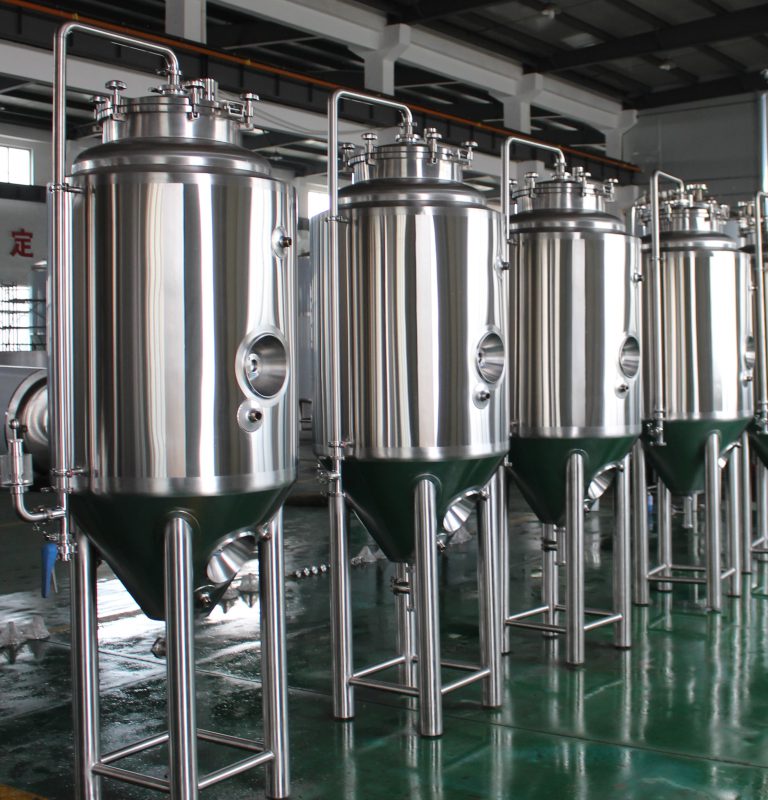Introduction

In the dynamic world of brewery operations, efficiency and quality are paramount. Among the various factors influencing the brewing process, yeast management stands out as a crucial element. Yeast propagation tanks play a pivotal role in optimizing brewery operations by ensuring a consistent supply of healthy yeast cells, essential for fermentation. This article delves into the significance of yeast propagation tanks in brewery settings and explores how they contribute to enhancing productivity and product quality.
Understanding Yeast Propagation Tanks
Yeast propagation tanks are specialized vessels designed to facilitate the growth and maintenance of yeast cultures. These tanks provide an environment conducive to yeast proliferation, allowing breweries to cultivate and propagate their yeast strains efficiently. By controlling factors such as temperature, oxygen levels, and nutrient supply, brewers can optimize yeast growth and vitality within propagation tanks. This process enables the production of high-quality beer with desired flavor profiles and fermentation characteristics.
Benefits of Yeast Propagation Tanks
The utilization of yeast propagation tanks offers several benefits to breweries:
- Cost Efficiency: By propagating yeast in-house, breweries reduce reliance on external yeast suppliers, leading to cost savings over time.
- Quality Control: Maintaining yeast cultures within controlled propagation tanks ensures consistency in fermentation performance and beer quality.
- Flexibility: Breweries can tailor yeast propagation protocols to suit specific beer styles and production schedules, enhancing flexibility in brewing operations.
- Sustainability: Minimizing the need for external yeast procurement reduces transportation-related carbon emissions, contributing to sustainability goals.
- Risk Mitigation: By cultivating and storing backup yeast cultures, breweries can mitigate the risk of fermentation issues due to yeast-related problems.
Implementation and Maintenance
Successful implementation and maintenance of yeast propagation tanks require attention to various factors:
- Equipment Selection: Choosing the appropriate size and design of propagation tanks based on production volume and yeast strain characteristics is crucial.
- Sanitation Protocols: Strict sanitation procedures are essential to prevent contamination and maintain yeast health.
- Monitoring Parameters: Regular monitoring of temperature, pH, cell counts, and viability ensures optimal yeast growth and vitality.
- Propagation Techniques: Employing suitable propagation techniques, such as batch or continuous propagation, depending on brewery requirements and yeast strain characteristics.
- Training and Education: Providing training to brewery staff on yeast management practices and tank operation enhances operational efficiency and quality control.
Comparison of Batch vs. Continuous Yeast Propagation Methods

This table provides a comparative analysis of batch and continuous yeast propagation methods, highlighting differences in equipment, investment, labor, propagation time, flexibility, contamination risk, and scalability. Breweries can choose the method that best suits their operational needs and production requirements.
| Parameter | Batch Propagation | Continuous Propagation |
|---|---|---|
| Equipment Complexity | Moderate | High |
| Initial Investment | Lower | Higher |
| Labor Requirement | Intermittent | Continuous |
| Propagation Time | Longer (Typically 1-2 days) | Shorter (Continuous Process) |
| Flexibility | Limited (Batch Processing) | High (Continuous Processing) |
| Risk of Contamination | Moderate | Higher (Continuous Flow) |
| Scalability | Limited (Batch Sizes) | High |
Conclusion
Yeast propagation tanks play a vital role in optimizing brewery operations, offering benefits such as cost efficiency, quality control, and flexibility. By investing in proper equipment, implementing effective protocols, and fostering a culture of continuous improvement, breweries can harness the potential of yeast propagation tanks to elevate their brewing processes and deliver exceptional beers to consumers.
FAQ
Q: Can any yeast strain be propagated in these tanks?
A: While most yeast strains can be propagated using appropriate techniques, some may require specific conditions or considerations. It’s essential to consult yeast suppliers or brewing experts for guidance on suitable propagation methods for different yeast strains.
Q: How often should yeast propagation tanks be cleaned?
A: Cleaning frequency depends on usage and sanitation protocols. Typically, tanks should be thoroughly cleaned and sanitized between each propagation cycle to prevent contamination and maintain yeast health.
Q: What is the typical lifespan of yeast propagated in these tanks?
A: With proper management and storage, yeast propagated in dedicated tanks can remain viable for multiple generations. Regular monitoring of cell viability and health indicators can help determine when to refresh or replace yeast cultures.

